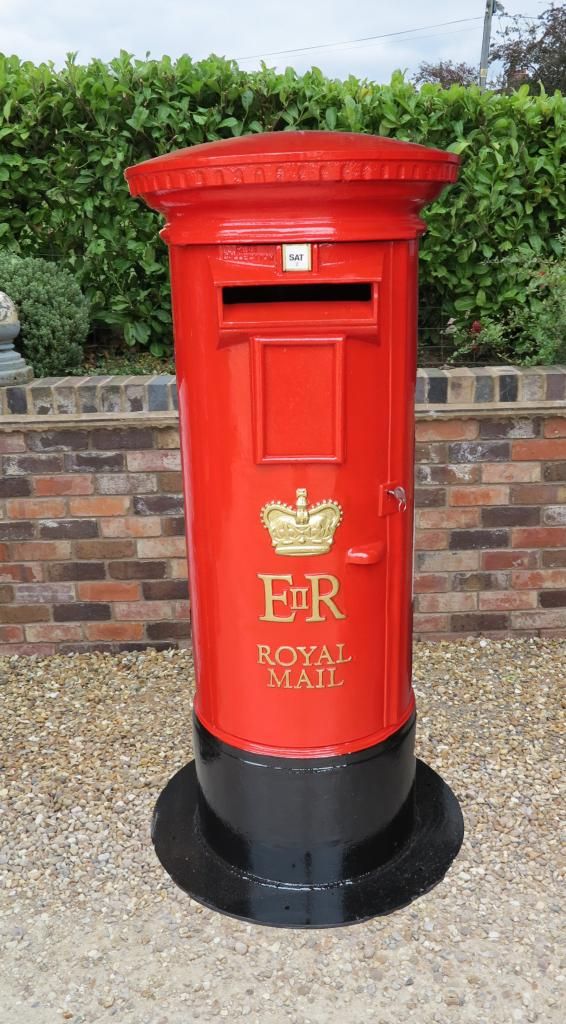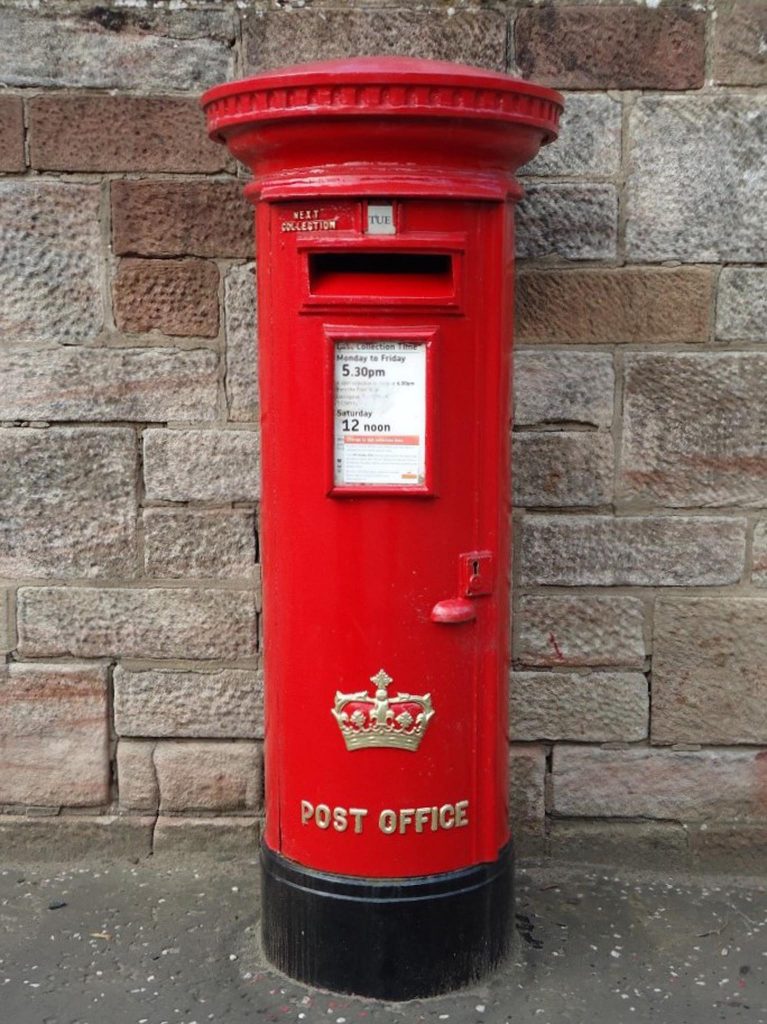
Finest Hour 189
“Keep Their Silliest People in Order”

Queen Elizabeth II Pillar Boxe - English version
October 4, 2020
Finest Hour 189, Third Quarter 2020
Page 40
By David Freeman
David Freeman is editor of Finest Hour.
To return to power in 1951, Winston Churchill needed support in Scotland as much as he did anywhere else. During the general election campaign, therefore, he dutifully traveled to Glasgow, where he spoke at St. Andrew’s Hall on 17 October. If the Conservatives were to win, Churchill told his audience, “We shall advise the creation of a new Minister of State for Scottish Affairs of Cabinet rank, to work in Scotland as Deputy to the Secretary of State.”1
The strategy worked. The Tories eked out a seventeen-seat majority in the election by securing thirty-five of the seventy-one Scottish seats. Churchill became prime minister for the second time and appointed his former Chief Whip, James Stuart, as Secretary of State for Scotland. Stuart in turn recommended that Alec Douglas-Home, who had recently succeeded his father to become the 14th Earl of Home, be appointed as the promised Minister of State.
The selection of the middle-aged earl did not appeal to Churchill. As a member of the House of Commons, then styled Lord Dunglass, Douglas-Home had been Parliamentary Private Secretary to Prime Minister Neville Chamberlain and had accompanied his leader to the infamous Munich Conference, which Churchill had vociferously denounced. Stuart stood firm, however, and Churchill relented. “All right— have your Home sweet Home,” he huffed. “The Prime Minister’s personal directive to me was characteristic and terse,” Douglas-Home later recalled, “‘Go and quell those turbulent Scots, and don’t come back until you’ve done it.’”2 There was indeed to be turbulence.

2024 International Churchill Conference

Less than four months after Churchill’s return to Downing Street, King George VI died and was succeeded by his elder daughter. The new sovereign was undoubtedly the second reigning Queen Elizabeth—in England. During the reign of Elizabeth I, however, Scotland had been the independent realm of James VI, who succeeded the Virgin Queen to become King James I of England in 1604. It stood to reason, many Scots believed, that in their country the daughter of George VI was not Elizabeth II but simply Elizabeth Regina with no ordinal designation. The Royal Cypher, therefore, should be “ER” and not “E II R” in the northern kingdom. This fine distinction, however, was initially lost on the Post Office.
The Battle Begins
“On 28 November 1952,” historian David McLean writes, “an official party assembled at the junction of Gilmerton Road and Walter Scott Avenue in Edinburgh’s newly-built Inch housing estate to formally unveil Scotland’s first ‘E II R’ pillar box.” Letters of protest had been sent to local authorities expressing disapproval over what some viewed as an inappropriate Royal Cypher for use on Scottish letterboxes. Consequently, “five police officers were present at the unveiling ceremony.”3
Despite the box receiving special protection, vandals soon struck. Within thirty-six hours the Royal Cypher had been defaced with tar, and two unsuccessful attempts to blow up the box followed within two months. McLean continues the story:
Finally, on 12 February 1953 at around 10 pm, the Inch was rocked by an explosion that could be heard a mile away. The three-month-old post box had been completely blown apart courtesy of a gelignite bomb. The next day a small Lion Rampant was discovered draped across its smouldered ruins.4
Questions in the House
With the coronation of the new queen approaching, an issue that some regarded as a matter of national pride and others viewed as infinitely trivial reached the floor of the House of Commons. During Prime Minister’s Question Time on 1 April 1953, John Rankin, a Labour MP for Glasgow, “asked the Prime Minister if he will arrange that the Royal Cypher is not placed on new pillar boxes.” To this Churchill replied, “Her Majesty’s Government are not prepared to place any general restriction on the use of the Royal Cypher. Its use for any particular purpose is a matter for detailed decision in relation to the circumstances of the case.”
But Rankin had only just started. He now launched into his follow up: “May I ask the Prime Minister if there is any truth in the statement that, in order to strengthen the case for the retention of the numeral, the Government have issued a circular offering £2,000 reward for information leading to the identification of Elizabeth I of Scotland, dead or alive? Is that now Government policy?”
If Rankin was trying to get the Prime Minister worked up, he succeeded. “When I think of the greatness and splendour of Scotland,” Churchill answered, “and her wonderful part in the history not only of this island but of the world, I think they really ought to keep their silliest people in order.”
Still Rankin kept charging: “Then may I ask the Prime Minister what steps he is taking to discover the authors of this poster?” But Churchill had had enough of this political posturing. “It is not part of my duties as Prime Minister to seek out and work up into all these small ferret holes,” he replied. “If the Hon. Gentleman has any information to give to Her Majesty’s Government, or to the police, the Secretary of State for Scotland is entirely at his disposal.”5
Clearly Churchill viewed the controversy as nothing more than a tiresome gadfly. Nevertheless, a resolution was required. The residents of Inch were justifiably concerned about public safety, and nobody wanted the violence to spread. As the Government’s “boots on the ground” in Edinburgh, Douglas-Home in conjunction with Stuart back in Westminster quietly arranged that new pillar boxes in Scotland should be decorated only with images of the crown. There would be no Royal Cypher. In time for the coronation, a truce had been established.
Endnotes
1. Robert Rhodes James, ed., Winston S. Churchill: His Complete Speeches, Vol. VIII, 1950–1963 (New York: Chelsea House, 1974), p. 8276.
2. Alec Douglas-Home, The Way the Wind Blows (New York: Quadrangle, 1976), pp. 102–03.
3. David McLean, “Lost Edinburgh: The Queen and the Exploding Postbox,” The Scotsman, 3 September 2014.
4. Ibid.
5. Parliamentary Debates, 1 April 1953.
Subscribe
WANT MORE?
Get the Churchill Bulletin delivered to your inbox once a month.


